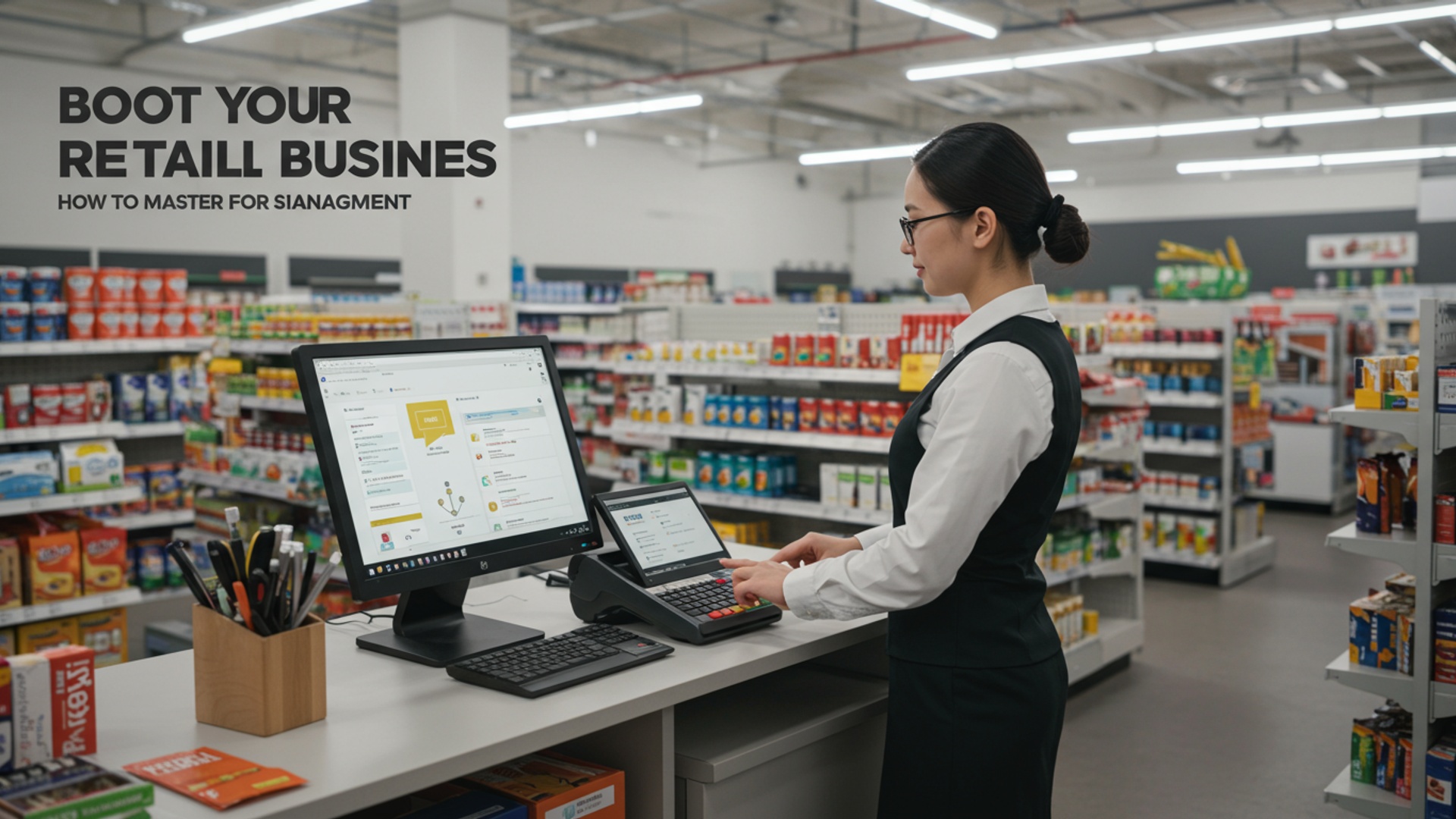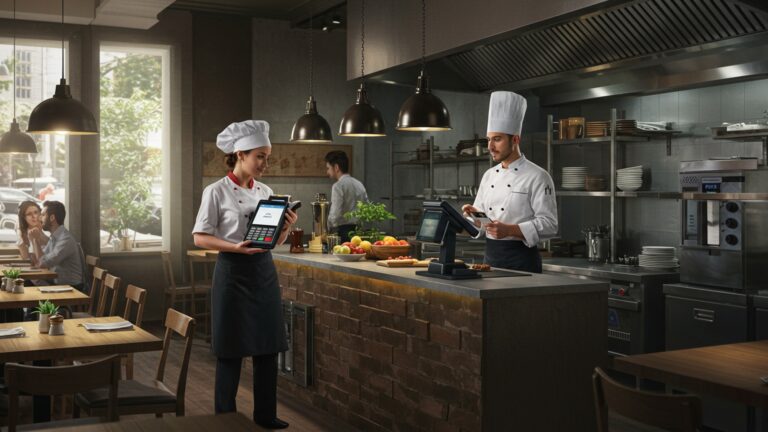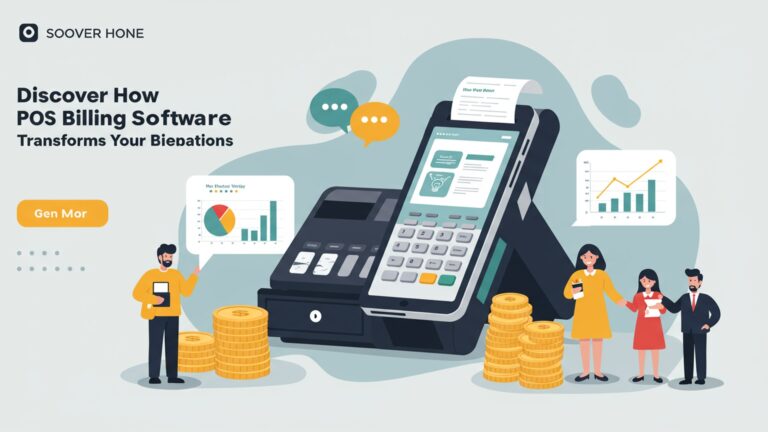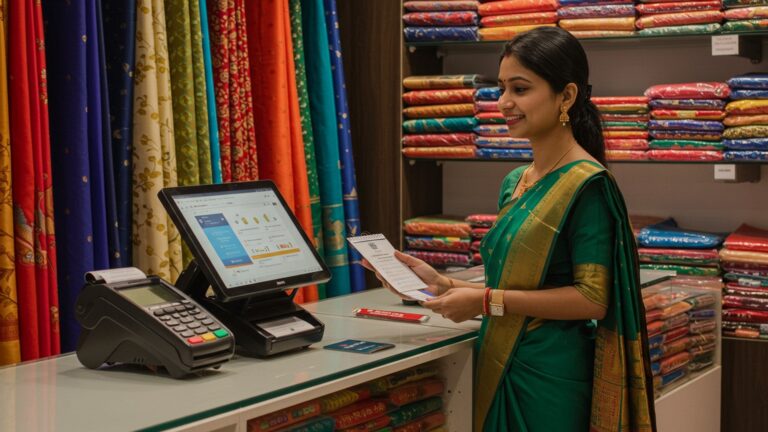Boost Your Retail Business How to Master POS Software for Seamless Management
In today’s fiercely competitive retail landscape, merely having a storefront isn’t enough; operational efficiency and a superior customer experience dictate success. Businesses grappling with inventory discrepancies, slow checkout lines, or fragmented sales data often find their growth stifled. This is where mastering modern pos software for retail becomes indispensable. Beyond basic transaction processing, advanced systems now integrate real-time inventory management, robust CRM functionalities. actionable sales analytics, transforming how retailers operate. Consider how cloud-based POS platforms, like those adopted by many boutique stores and pop-ups, enable seamless omnichannel operations and provide critical insights into customer buying patterns. Effective deployment of this technology is no longer optional; it’s the strategic backbone for scaling operations, enhancing customer loyalty. ultimately, boosting profitability in an evolving market.

Understanding the Foundation: What is POS Software for Retail?
In the dynamic world of retail, the Point of Sale (POS) system has evolved far beyond a simple cash register. Modern pos software for retail serves as the central nervous system of a business, integrating crucial operations from sales transactions to inventory management and customer relationship tracking. At its core, POS software is a system that processes transactions and manages the data associated with them. When a customer makes a purchase, the POS system records the sale, updates inventory levels, calculates taxes. processes payments.
But, today’s sophisticated POS solutions do much more. They are designed to streamline operations, enhance customer experiences. provide invaluable insights into business performance. Think of it not just as a tool for ringing up sales. as a comprehensive platform that empowers retailers to make data-driven decisions and optimize every aspect of their business.
Core Features of Advanced POS Software for Retail
To truly master pos software for retail, it’s essential to comprehend the breadth of features available. These functionalities are designed to tackle various retail challenges, from managing stock to understanding customer behavior.
- Inventory Management
- Sales Reporting and Analytics
- Customer Relationship Management (CRM)
- Employee Management
- Payment Processing
- Multi-Store Management
- E-commerce Integration
This is arguably one of the most critical components. Advanced POS software allows real-time tracking of stock levels, automates reorder points, manages product variants (sizes, colors). facilitates inventory transfers between stores. This prevents stockouts and overstocking, ensuring optimal product availability.
Beyond basic sales totals, a robust POS system provides detailed reports on sales trends, peak hours, best-selling products, employee performance. profit margins. These insights are crucial for strategic planning.
Modern POS software often includes integrated CRM tools. This allows retailers to capture customer data (purchase history, contact insights), manage loyalty programs, offer targeted promotions. personalize the shopping experience.
Track employee hours, manage commissions, set access permissions. monitor individual sales performance. This simplifies payroll and helps identify top performers.
Seamlessly integrate with various payment methods, including credit/debit cards, mobile payments. contactless options. Security features like tokenization and encryption are paramount here.
For businesses with multiple locations, advanced POS solutions offer centralized control over inventory, pricing. reporting across all stores, providing a unified view of the entire operation.
A truly seamless experience extends online. Integrating your physical store POS with your e-commerce platform ensures consistent inventory, pricing. customer data, supporting an omnichannel retail strategy.
Transformative Benefits of Mastering Your POS System
Mastering your pos software for retail isn’t just about knowing how to use its features; it’s about leveraging them to transform your business. The benefits are far-reaching and directly impact profitability and customer satisfaction.
- Enhanced Operational Efficiency
- Data-Driven Decision Making
- Improved Customer Experience
- Optimized Inventory Control
- Fraud Prevention and Security
Automating tasks like inventory updates, sales calculations. reporting significantly reduces manual effort and human error. This frees up staff to focus on customer engagement and other value-added activities. For instance, consider ‘Boutique Bliss,’ a small fashion retailer. Before mastering their POS, they spent hours each week manually reconciling inventory. After implementing and fully utilizing their new POS, they automated stock counts and reorder alerts, reducing inventory discrepancies by 80% and saving approximately 10 hours of staff time weekly.
The rich data generated by your POS system is a goldmine. By analyzing sales reports, customer trends. inventory turnover, retailers can make informed decisions about product assortment, pricing strategies, marketing campaigns. staffing levels. This moves decision-making from guesswork to strategic insight.
With integrated CRM, staff can quickly access customer purchase history, preferences. loyalty points. This enables personalized recommendations, faster checkouts. a more engaging shopping experience, fostering loyalty and repeat business.
Real-time inventory tracking minimizes stockouts, preventing lost sales. reduces overstocking, which ties up capital. This leads to better cash flow and healthier profit margins.
Modern POS systems come with robust security features, reducing the risk of internal theft and external fraud. Detailed transaction logs provide accountability and help identify discrepancies quickly.
Choosing the Ideal POS Software for Your Retail Business
Selecting the right pos software for retail is a critical decision that can define your operational capabilities and growth potential. It’s not a one-size-fits-all solution; your choice should align with your specific business needs, budget. future aspirations. Here’s a comparison of key considerations:
| Feature/Consideration | Cloud-Based POS (SaaS) | On-Premise POS |
|---|---|---|
| Deployment & Access | Accessed via web browser or app from anywhere, anytime. Data stored on vendor’s servers. | Software installed directly on your hardware. Data stored locally on your servers. |
| Cost Structure | Subscription-based (monthly/annually). Lower upfront cost. Includes updates and support. | Higher upfront cost for software license and hardware. Additional costs for updates, maintenance. support. |
| Scalability | Highly scalable. Easy to add/remove users, locations, or features as business grows. | Scalability depends on initial hardware and software investment; may require significant upgrades. |
| Maintenance & Updates | Vendor manages updates, security. maintenance automatically. | Requires in-house IT expertise or third-party support for updates, security. troubleshooting. |
| Security | Managed by vendor, often with robust, enterprise-grade security measures and backups. | Your responsibility. Requires vigilant in-house security protocols and regular backups. |
| Integration Capabilities | Often has open APIs and pre-built integrations with popular e-commerce, accounting. CRM platforms. | Integration can be more complex, requiring custom development or specific connectors. |
| Hardware Requirements | Flexible, often works with standard tablets, smartphones. minimal peripherals. | Typically requires dedicated server, workstations. specific hardware. |
Beyond this, consider factors like the software’s ease of use (intuitive interface reduces training time), vendor reputation and support (responsive customer service is invaluable). its ability to integrate with your existing business tools (accounting software, e-commerce platform).
Strategic Implementation and Staff Training
Once you’ve chosen your pos software for retail, successful implementation is key to unlocking its full potential. This involves more than just plugging in hardware; it requires a strategic approach and, crucially, comprehensive staff training.
- Data Migration
- Hardware Setup
- Phased Rollout
- Comprehensive Staff Training
- Ongoing Support and Feedback
Carefully plan the transfer of existing product data, customer data. vendor details into the new system. Accuracy here is paramount to avoid operational hiccups.
Install and configure necessary hardware such as barcode scanners, receipt printers, cash drawers. payment terminals. Ensure all components communicate effectively with the software.
For larger operations, consider a phased implementation. Start with a pilot store or a limited set of features to iron out any issues before a full deployment.
This is arguably the most critical step for mastering your POS. Don’t just show staff how to ring up a sale. Train them on every feature: inventory lookups, customer profiles, loyalty program enrollment, returns and exchanges, reporting basics. troubleshooting common issues. Role-playing scenarios can be highly effective. A well-trained team will be more efficient, make fewer errors. be more confident in assisting customers. I’ve observed that businesses that invest heavily in hands-on training for their staff experience a significantly smoother transition and faster adoption rate, leading to quicker ROI.
Establish a clear channel for staff to report issues or suggest improvements. Regularly review system performance and user feedback to make continuous optimizations.
Leveraging Data for Strategic Retail Growth
Mastering pos software for retail means moving beyond transactional processing to strategic data analysis. The true power lies in the insights you can extract from the data it collects. Retailers can use these insights to drive growth in several key areas:
- Sales Trend Analysis
- Product Performance
- Customer Segmentation and Personalization
- Employee Performance Optimization
- Pricing Strategy
Identify peak sales periods, grasp seasonal demand. forecast future sales more accurately. This enables better staffing and inventory planning.
Pinpoint best-selling and slow-moving items. This informs purchasing decisions, promotions. markdown strategies. For example, a sports goods store discovered through their POS reports that ‘running shoes’ consistently sold well on weekday mornings, while ‘team sports equipment’ peaked on weekends. This insight allowed them to adjust staffing and marketing efforts accordingly.
Utilize CRM data to segment customers based on purchase history, frequency. value. This allows for highly targeted marketing campaigns, personalized product recommendations. tailored loyalty offers, increasing customer lifetime value.
assess individual sales data to identify top performers and areas where staff might need additional training. This can inform commission structures and motivational programs.
Use sales data to test different pricing models, interpret price elasticity. optimize promotions for maximum profitability without alienating customers.
// Example of a SQL query to extract top-selling products (conceptual)
SELECT p. product_name, SUM(li. quantity) AS total_quantity_sold, SUM(li. price li. quantity) AS total_revenue
FROM transactions t
JOIN line_items li ON t. transaction_id = li. transaction_id
JOIN products p ON li. product_id = p. product_id
WHERE t. transaction_date BETWEEN '2023-01-01' AND '2023-12-31'
GROUP BY p. product_name
ORDER BY total_revenue DESC
LIMIT 10;
This conceptual SQL query illustrates how underlying data from a POS system can be aggregated to reveal top-performing products. While most modern POS systems provide these reports through their user interface, understanding the potential for detailed analysis highlights the depth of data available.
Real-World Applications: POS Software in Action
The practical application of well-mastered pos software for retail can be seen across various retail segments. Consider the story of “The Urban Baker,” a local bakery with three locations. Initially, they struggled with inconsistent inventory and pricing across stores, leading to waste and customer frustration.
By implementing a cloud-based POS system, The Urban Baker centralized their inventory management. Now, when a popular artisan bread sells out at one location, staff can quickly check stock at another store and even arrange a transfer, preventing lost sales. Their integrated CRM allowed them to track customer preferences, offering personalized discounts on their favorite pastries, which boosted repeat business by 15%. Moreover, detailed sales reports helped them identify peak hours for specific products, leading to optimized baking schedules and a significant reduction in perishable waste.
Another example is “Gear Up Sports,” an independent outdoor gear shop. They leveraged their POS system’s e-commerce integration to create a truly omnichannel experience. Customers could check online stock levels before visiting the store, purchase online and pick up in-store, or even return online purchases at the physical location. This seamless experience, powered by their integrated pos software for retail, not only improved customer satisfaction but also expanded their reach beyond local foot traffic, competing effectively with larger retailers.
Emerging Trends in POS Technology
The landscape of pos software for retail is continually evolving. Staying abreast of emerging trends is part of mastering this technology and ensuring your business remains competitive.
- Mobile POS (mPOS)
- AI and Machine Learning Integration
- Omnichannel Retailing
- Self-Checkout and Contactless Payments
- Subscription and Loyalty Program Sophistication
The rise of tablets and smartphones has led to highly portable mPOS solutions. These allow staff to process sales anywhere on the store floor, busting queues and offering a more personalized checkout experience.
Expect to see more AI-driven insights, such as predictive analytics for inventory management, personalized product recommendations based on customer behavior. optimized pricing strategies.
The integration of online and offline sales channels will become even more seamless. POS systems will be at the heart of unifying inventory, customer data. sales across all touchpoints.
Driven by customer preference and efficiency, self-checkout kiosks and a wider array of contactless payment options are becoming standard, reducing wait times and enhancing convenience.
POS systems will offer more robust tools for managing complex loyalty programs, subscription services. recurring billing, catering to modern consumer habits.
Conclusion
Mastering POS software isn’t merely about processing transactions; it’s about unlocking a competitive edge for your retail business. Embrace its full spectrum of capabilities, from real-time inventory tracking to insightful sales analytics, transforming data into actionable strategies. My personal tip? Don’t just settle for basic usage; dedicate time weekly to explore one new feature, like setting up a loyalty program or integrating with your e-commerce platform. I recently saw a small bookstore double its online order efficiency simply by connecting their physical POS inventory with their website, a current trend in omnichannel retail. Remember, a well-utilized POS system is your strategic partner in navigating today’s dynamic retail landscape. It empowers you to adapt to recent developments like contactless payments and personalized customer experiences, ensuring your operations are not just seamless but also future-proof. Take the leap, optimize your processes. watch your retail venture not just grow. truly flourish.
More Articles
Enhance Your Retail Store How to Implement POS Software Effectively
Understanding POS Software A Practical Guide to Streamlining Your Retail Business
Why Cloud Based POS Software is Your Business Future Learn How to Adopt It
Find the Best POS Software in India A Comprehensive Buying Guide
How to Choose the Best Billing and POS Software for Your Business Needs
FAQs
What exactly is POS software and why should my retail business care?
POS, or Point of Sale, software is like the central brain for your retail operations. It processes transactions, manages inventory, tracks sales. handles customer data. Your business should care because it streamlines everything, makes you more efficient. helps you make smarter decisions to grow.
How does mastering POS software help me keep track of all my stuff (inventory)?
Mastering POS gives you real-time visibility into your inventory. You can track stock levels instantly, set up automatic reorder points, identify best-sellers and slow-movers. even manage returns more smoothly. No more guessing games or manual counts – it’s all right there.
Is it complicated to learn how to use one of these systems, or can anyone pick it up?
Most modern POS systems are designed to be user-friendly and intuitive. While there’s a learning curve with any new tech, many offer easy-to-navigate interfaces, clear workflows. often provide training resources. With a little practice, your team can become proficient pretty quickly.
Beyond just ringing up sales, what other cool things can POS software do for my business?
Oh, tons! Besides sales, it can generate detailed sales reports, manage customer loyalty programs, track employee performance, integrate with accounting software, handle gift cards. even help you with promotions and discounts. It’s a powerhouse for operational insights.
Can using POS software actually make my customers happier?
Absolutely! Faster checkout times mean less waiting. Access to customer purchase history allows for personalized recommendations. Loyalty programs keep them coming back. Plus, accurate inventory means fewer ‘sorry, we’re out of stock’ moments. A smooth experience makes for happy shoppers.
My retail business has a few different locations. Can one POS system manage them all?
Yes, many advanced POS solutions are built for multi-store management. They allow you to centralize inventory, sales data. customer details across all your locations. This gives you a unified view of your entire business and helps maintain consistency.
How does POS software help me grasp my sales performance better?
It’s a data goldmine! POS software provides in-depth reporting on everything from daily sales totals and average transaction values to sales by product category, employee, or even time of day. This data helps you spot trends, identify top-performing products. make informed decisions to boost profitability.





